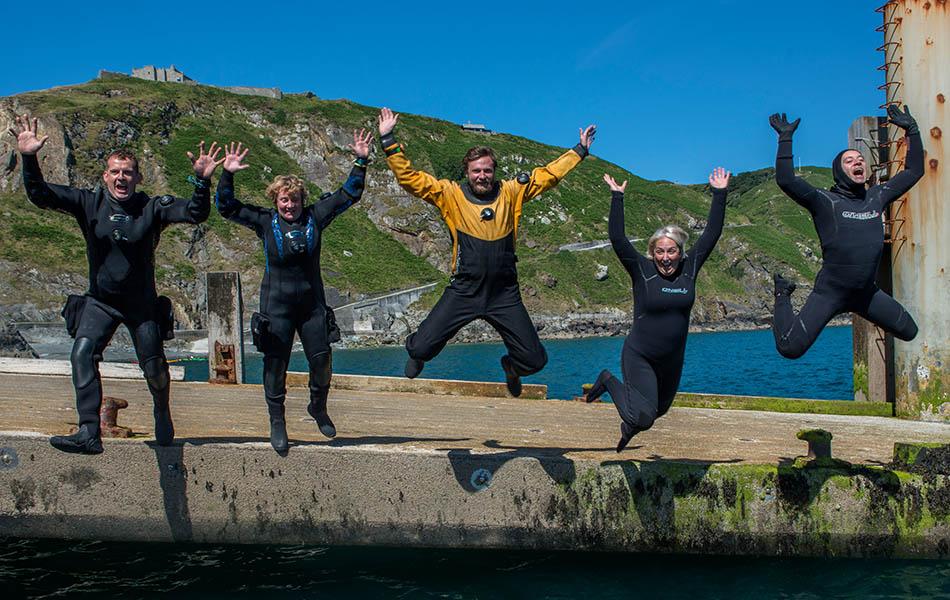
Kirsty Andrews is obsessed with finding some of our more elusive sea creatures, as this month’s tale of two shrimps demonstrates.
In one of my earliest columns in this magazine, I wrote about my successful hunt for the snakelocks anemone shrimp Periclimenes sagittifer under Swanage pier, conducted with military precision with the assistance of my buddy, Jen. It’s hard to believe, but that dive was almost a decade ago now, and these days, snakelocks anemone shrimp are not common as muck exactly but they can reliably be found in significant numbers at a variety of spots along the south coast. Last year alone, I saw them at Swanage again; Babbacombe in Torbay (plenty here too, especially active at night); at Chesil beach and on the Fleur de Lys wreck - and that’s without even trying! My apologies to northern friends as I believe they’re still exclusive to the south coast for now.
I still appreciate a delightful, colourful Periclimenes but this year, and in fact for the past few years, my focus has shifted to the even more elusive and even more tropically coloured featherstar shrimp, Hippolyte prideuxiana. It’s not that I have a shrimp obsession, it’s just that I like looking for things, I’m competitive enough to enjoy a challenge, and these colourful, tiny critters are in my view some of the superstars of our UK underwater world.
My quest for this master of featherstar camouflage started as soon as I became aware of its existence
My quest for this master of featherstar camouflage started as soon as I became aware of its existence a few years back. I knew the first recorded instance was on the wreck of the Dresden in Scapa Flow, so on a wrecky-tekky week I spent a happy hour hovering over the shallowest part of the wreck, peering intently at a field of featherstars and examining them one by one - unsuccessfully.
Needless to say, my buddy (or patient babysitter) Mark drew the short straw that day; sorry bud. I visited Shetland that same year and got the chance to chat to Rachel Shucksmith, who made that first recording: she gave me some tips on where to find them but I still was unlucky, until last year.
I must properly give thanks to my friend Terry, who found the shrimp the day before and gave such precise instructions that even this cunningly camouflaged critter was difficult to miss. When you’ve looked for so long, locating the prize is just a fabulous feeling. Even better, on returning a week later I couldn’t believe my eyes when I noticed not just the stunning animal but two on the same spot: male and female.
The female is the real showstopper and the male about a third of the size, with a complementary but contrasting pattern. Still, incredible to see a pair after searching so long for an individual. And, to my jawdropped astonishment, we saw three pairs on that dive. Buses and featherstar shrimp have a lot in common it seems. As well as the sightings at Scapa Flow, in Shetland and on Scotland’s west coast lochs, one was spotted in the Berwickshire marine reserve this year, but to my knowledge they haven’t made it further south yet. I wonder if, ten years from now, I will be considering them common and looking to the next excitement. For now, I will certainly still cherish every sighting.
BSAC members save £££s every year using BSAC benefits.
Join BSAC today and start saving on everything from scuba gear, diving holidays and diver insurance, to everyday purchases on food, online shopping and retail with BSAC Plus. Click to join BSAC today.
Article ‘Crustacean fascination’ by Kirsty Andrews first published in SCUBA magazine, Issue 135 May 2023.

 Author: Kirsty Andrews | Posted 31 May 2023
Author: Kirsty Andrews | Posted 31 May 2023




